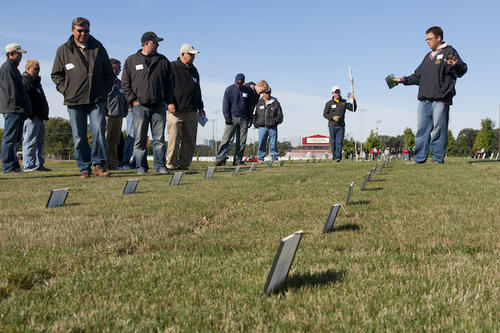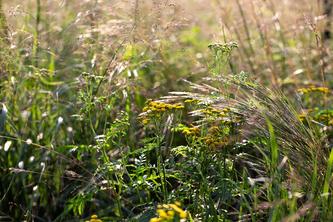
There’s a type of grass, called fine fescue, that needs much less water and mowing than a typical lawn grass, and only needs to be fertilized once a year.
Unfortunately, just knowing that isn’t enough to get most people to put fine fescues in their yard.
Eric Watkins, professor in the College of Food, Agricultural, and Natural Resource Sciences, is driven to figure out why. Recently he received a $5.4 million grant from the U.S. Department of Agriculture's (USDA) National Institute of Food and Agriculture (NIFA) to discover what is stopping homeowners from using fine fescues and how new varieties can be bred to overcome those barriers. This is a multi-institution effort that is working to increase low-input turfgrass use all the way from the grass seed fields of Oregon to home lawns in the Northeast.
The funding for this project is made through the Specialty Crop Research Initiative, which seeks to invest in long-term solutions that address problems in the overlapping systems of production, distribution and processing, and consumers and markets. This research initiative encourages collaboration, open communication, the exchange of information, and the development of resources that accelerate application of scientific discovery and technology to help U.S. producers be more competitive in a global market.
“We’ve known for some time that fine fescues can work really well as a low-input turfgrass,” says Watkins. “We’ve been working on some of the barriers homeowners face for the last several years, and will continue to learn more about these grasses so that we can release new varieties of fine fescues that are well-adapted to our climate.”
To begin the project, two members of the team from Minnesota, Kristen Nelson and Chengyan Yue, will identify what might be preventing people from using fine fescues. “Is it too hard to convert an existing lawn? Is the seed too expensive or hard to find? Maybe consumers simply lack the information they need to take the next steps,” explains Watkins. Nelson and Yue’s research will help pinpoint exactly why homeowners aren’t using fine fescues.
Once these barriers are uncovered, the project will shift to identifying solutions. “For example, researchers in Oregon are going to find ways to produce fine fescue seed more efficiently, which should result in better seed availability in local stores,” says Watkins. “Pathologists in Wisconsin and New Jersey are seeking solutions to the plant diseases that affect these grasses. Breeders and geneticists in New Jersey, Utah, and Minnesota are identifying genetic markers associated with improved low-input turf performance that can be used in breeding programs.”
The final step is making the information and the new varieties available to the average homeowner. To accomplish this, computer scientists at the University of Minnesota will create new ways to obtain historical performance data for fine fescues, while Extension educators in Indiana, Minnesota, and New Jersey will develop freely-available educational resources. “Our ultimate goal,” says Watkins, “is to ensure that consumers have the opportunity to use lower-input grasses, like the fine fescues, which should result in significantly less watering, mowing, fertilization, and pesticide applications.” The transition of more lawns to fine fescues will mean less maintenance work for homeowners, and more sustainable lawns.
NIFA announced 12 new grants in August 2017, totaling $35 million for science-based solutions and new technology for the specialty crop industry. They have invested more than $400 million through the SCRI program to date. More information on this project and the others funded is available on the NIFA website.
- Categories:
- Agriculture and Environment





